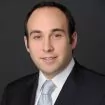I. Overview
In a 6-2 decision on March 27, 2019, the Supreme Court of the United States held that a person who disseminates false or misleading statements to potential investors with the intent to defraud can be found to have violated Rule 10b-5(a) or (c) of the Securities Exchange Act of 1934 (the "Exchange Act"), even where the person was not the "maker" of the misleading statements under Rule 10b-5(b). The decision is a victory for the Securities and Exchange Commission (the "SEC"), and will be cited by civil plaintiffs, as it makes clear that primary violations of Rules 10b-5(a) and (c) may be brought against defendants even where they do not "make" the alleged misstatement, though litigants still must plead a strong inference of scienter, which continues to be a high hurdle in many cases.
II. Background and Procedural History
Lorenzo v. SEC1 presented the question of whether a defendant who did not "make" a misstatement can be held liable for primary violations of the securities fraud provisions of the Exchange Act for disseminating false or misleading statements. The conduct at issue in Lorenzo occurred in 2009 when Francis Lorenzo, the director of investment banking at a registered broker-dealer, sent two e-mails to prospective investors that contained materially false and misleading statements. Lorenzo's supervisor supplied the content of the e-mails and directed Lorenzo to send them to prospective investors. Lorenzo knew that the e-mails contained false statements, but he "cut and pasted" the content that his supervisor supplied and sent the messages. In both of his e-mails, Lorenzo stated that they were sent at the request of his supervisor, and Lorenzo encouraged investors to contact him with any questions.
In 2013, the SEC instituted administrative proceedings against Lorenzo, his supervisor, and the registered broker-dealer for which they worked. The SEC charged that Lorenzo had violated Rule 10b-5, Section 10(b) of the Exchange Act, and Section 17(a)(1) of the Securities Act of 1933. An SEC administrative law judge found that Lorenzo had violated all of the provisions under which he was charged, and the SEC's Commissioners agreed on appeal.
Lorenzo appealed the SEC's decision to the United States Court of Appeals for the District of Columbia Circuit, arguing that (i) he lacked the requisite intent necessary to establish violations of Rule 10b-5 and Section 17(a)(1)2, and (ii) he could not be held liable under Rule 10b-5(b) because he was not the "maker" of the misstatements as such term has been interpreted by the Supreme Court in its 2011 opinion in Janus Capital Group, Inc. v. First Derivative Traders.3 In Janus, the Supreme Court held that only a person who "makes" a statement can violate Rule 10b-5(b), which prohibits "mak[ing] any untrue statement of material fact."4 Accordingly, the "maker" of a statement is the person or entity "with ultimate authority over the statement, including its content and whether and how to communicate it."5 In Janus, the Court left open the possibility that a person or entity could be liable under subsections (a) or (c) of Rule 10b-5. Rule 10b-5(a) makes it unlawful to "employ any device, scheme, or artifice to defraud," and Rule 10b-5(c) makes it unlawful to "engage in any practice, or course of business" that "operates . . . as a fraud or deceit."6
The D.C. Circuit (with then Judge Brett Kavanaugh in dissent) rejected Lorenzo's first argument and found that he did have the requisite state of mind.7 The panel unanimously agreed, however, that Lorenzo did not violate Rule 10b-5(b), holding that Lorenzo's supervisor had "ultimate authority" over the misstatements.8 Nonetheless, the divided panel upheld Lorenzo's violations of Rules 10b-5(a) and (c), Section 10(b), and Section 17(a)(1).9
Lorenzo appealed to the Supreme Court on the question of whether a person who is not the "maker" of a misstatement can violate Rule 10b-5(a) and (c) and related provisions.
III. The Supreme Court's Decision
The Supreme Court held, in a 6-2 decision (with Justice Kavanaugh recused), that a person who disseminates false or misleading statements with an intent to defraud can be held liable for violations of Rules 10b-5(a) and (c), as well as related statutory provisions, even where that person was not the "maker" of the misstatements.
Relying on the plain language of subsections (a) and (c). the Court concluded that because Lorenzo acted with an intent to deceive, it was "difficult to see how his actions could escape the reach of those provisions."10 Citing the dictionary definitions of the relevant terms, the Court held that Lorenzo's dissemination of false and misleading information constituted a "device, scheme, and artifice to defraud within the meaning of subsection (a) of the Rule," and that his conduct similarly constituted an "act, practice or course of business" that operated as a fraud under Rule 10b-5(c).11
The Court rejected Lorenzo's primary arguments. First, Lorenzo argued that subsections (a) and (c) do not reach his conduct because only subsection (b) is implicated in a case where misstatements are at issue.12 Lorenzo argued that subsections (a) and (c) are violated only when the case involves conduct other than (or in addition to) misstatements.13 The majority agreed with the SEC's longstanding position on this issue and rejected Lorenzo's argument because it presupposes that the provisions of Rule 10b-5 "should be read as governing different, mutually exclusive, spheres of conduct."14 The Court reasoned that it has long recognized overlaps between subsections of Rule 10b-5 and related statutory provisions.15 Furthermore, based on a reading of the plain language of the Rule, the Court found it difficult to imagine that certain conduct would not fall under both subsections (a) and (c).16
Second, Lorenzo argued that imposing primary liability for his conduct would erase or weaken the distinction between primary liability and secondary aiding and abetting liability.17 In Lorenzo's view, he should have been, at most, secondarily liable for violations of Rule 10b-5(b). To hold otherwise, Lorenzo suggested, would "inappropriately subject peripheral players in fraud . . . to substantial [primary] liability."18 The Court rejected this argument for three reasons. First, the Court recognized that it is not unusual for the same conduct to result in both primary liability and secondary liability.19 Second, the Court distinguished Lorenzo's conduct from past cases and recognized that Lorenzo was not just a "peripheral player" in the fraud, but rather actively disseminated false statements with an intent to defraud.20 Third, the Court reasoned that Lorenzo's interpretation of primary and secondary liability would leave open gaps where a person who did not "make" the misstatements at issue but knowingly disseminated that information could escape liability if the maker of those statements was not primarily liable.21 This would lead to a result where a knowing disseminator of misstatements would not be liable as an aider and abettor because there was no primary liability, and, according to Lorenzo's interpretation of Rule 10b-5, they could not be found to have violated any other provision.22
Justice Thomas, joined by Justice Gorsuch, dissented. The dissent reasoned that the conduct at issue did not fall within the plain text of Rule 10b-5(a), and, in any event, subsections (a) and (c) should not be interpreted to encompass primary liability for false statements.23 According to Justice Thomas, Rule 10b-5(a) is not applicable here because, even though Lorenzo knew the emails contained misstatements, this fact does "not change the essentially administrative nature of his conduct . . . [and] he did not himself plan, scheme, design, or strategize."24 Citing the interpretive canon that "the specific governs the general," Justice Thomas argued that Rule 10b-5(b) is operative in a case of false statements and that subsections (a) and (c) are not applicable.25 Lastly, the dissent argued that the majority's opinion would render Janus "a dead letter."26 The majority rebutted this by pointing out that Janus covered only the issue of whether or not a person is a "maker" of a misstatement and did not address whether Rule 10b-5 applies to the dissemination of false or misleading statements.27 Thus, per the majority, Janus is still relevant when "an individual neither makes nor disseminates false information."28
IV. Potential Implications
The Lorenzo decision has been described as a win for the SEC because it allows them to rely on primary violations of Rules 10b-5(a) and (c) where the person was not the "maker" of the misstatements. This may be relevant to civil litigants as well, who cannot rely on secondary liability for private Section 10(b) and Rule 10b-5 actions.29 The full impact of Lorenzo remains to be seen, and plaintiffs still must plead a strong inference of scienter, which continues to be a high hurdle in many cases.
Footnotes
1. Lorenzo v. SEC, 587 U.S. ___, No. 17-1077 (Mar. 27, 2019).
2. This state of mind is characterized as "a mental state embracing intent to deceive, manipulate, or defraud." Aaron v. SEC, 446 U.S. 680, 686 (1980) (internal quotation marks omitted).
3. 564 U.S. 135 (2011).
4. Id. at 142; 17 C.F.R. § 240.10b-5(b).
5. Janus, 564 U.S. at 142.
6. 17 C.F.R. § 240.10b-5(a) and (c).
7. Lorenzo v. SEC, 872 F.3d 578, 583 (D.C. Cir. 2017).
8. Id. at 588.
9. Id. at 590.
10. Lorenzo, slip op. at 6.
11. Id. (internal quotation marks omitted).
12. Id. at 7.
13. Id.
14. Id.
15. Id. at 7-8.
16. Id. at 8.
17. Id. at 10.
18. Id. at 11.
19. Id. (The Court analogized to a situation where a defendant sells an unregistered firearm to a man in order to help that man rob a bank. The defendant would be primarily liable for the sale of the firearm and secondarily liable for the bank robbery).
20. Id. at 11.
21. Id. at 11-12 (The Court illustrates this point by using an example where the maker of the misstatements does not violate subsection (b) because she lacked the necessary intent. According to the majority, this could allow a person who knowingly disseminates those false statements to avoid both primary and secondary liability under Lorenzo's theory).
22. Id. at 12.
23. Lorenzo, slip op at 4-5 (Thomas, J., dissenting).
24. Id. at 4-5.
25. Id. at 6-7.
26. Id. at 9.
27. Lorenzo, slip op. at 10.
28. Id.
29. See Central Bank of Denver, N.A. v. First Interstate Bank of Denver, N.A., 511 U.S. 164, 191 (1994).
The content of this article is intended to provide a general guide to the subject matter. Specialist advice should be sought about your specific circumstances.








